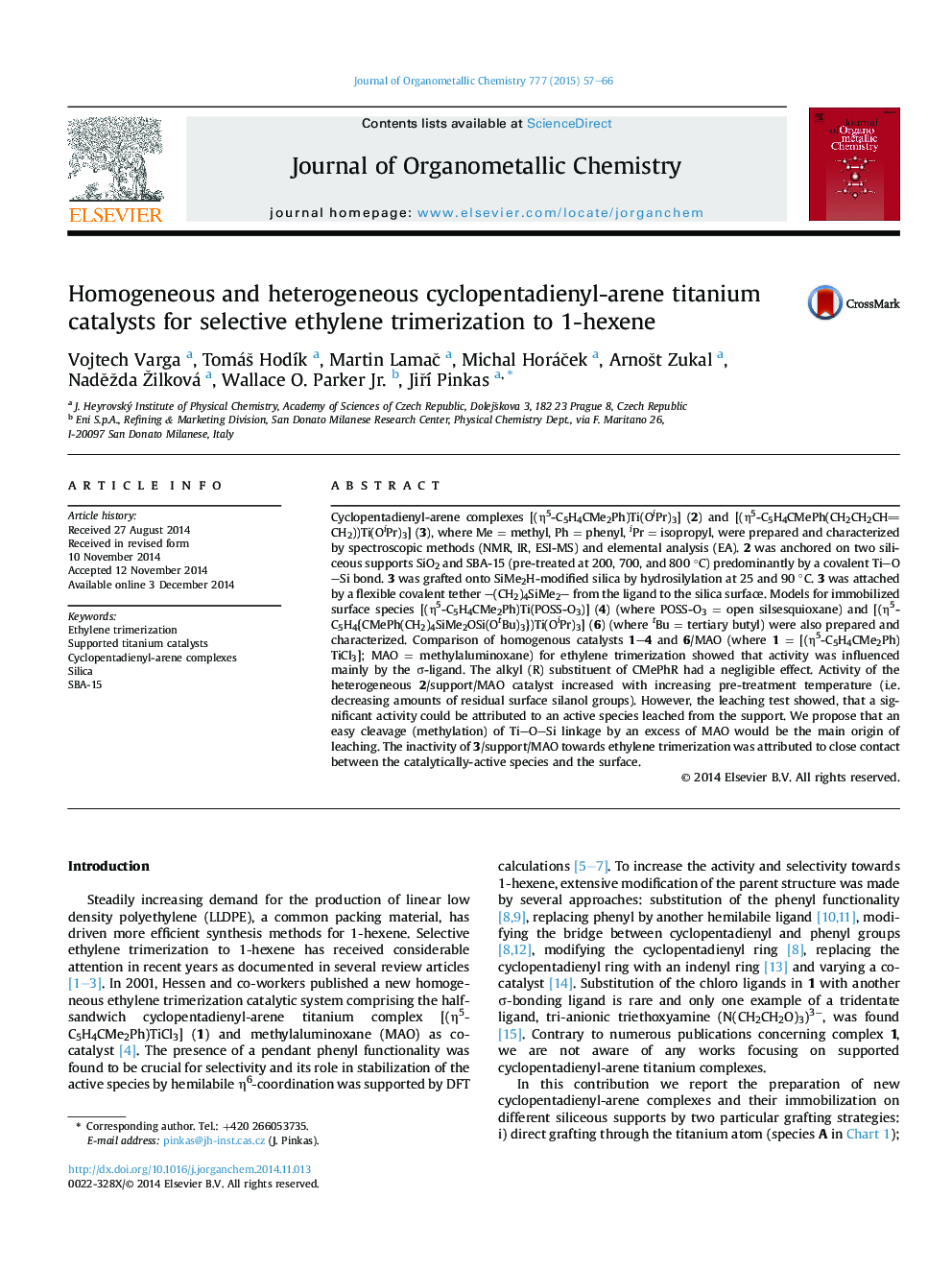| Article ID | Journal | Published Year | Pages | File Type |
|---|---|---|---|---|
| 1323549 | Journal of Organometallic Chemistry | 2015 | 10 Pages |
•Titanium cyclopentadienyl-arene complexes were anchored to siliceous supports.•Acidobasic route led to the surface species with covalent Ti–O–Si bonds.•Immobilization through flexible tether to SiMe2H modified silica was established.•Ti–O–Si bonded species suffered from active species leaching upon MAO action.•Flexible tether leads to a loss of activity in ethene trimerization.
Cyclopentadienyl-arene complexes [(η5-C5H4CMe2Ph)Ti(OiPr)3] (2) and [(η5-C5H4CMePh(CH2CH2CHCH2))Ti(OiPr)3] (3), where Me = methyl, Ph = phenyl, iPr = isopropyl, were prepared and characterized by spectroscopic methods (NMR, IR, ESI-MS) and elemental analysis (EA). 2 was anchored on two siliceous supports SiO2 and SBA-15 (pre-treated at 200, 700, and 800 °C) predominantly by a covalent Ti–O–Si bond. 3 was grafted onto SiMe2H-modified silica by hydrosilylation at 25 and 90 °C. 3 was attached by a flexible covalent tether –(CH2)4SiMe2– from the ligand to the silica surface. Models for immobilized surface species [(η5-C5H4CMe2Ph)Ti(POSS-O3)] (4) (where POSS-O3 = open silsesquioxane) and [(η5-C5H4{CMePh(CH2)4SiMe2OSi(OtBu)3})Ti(OiPr)3] (6) (where tBu = tertiary butyl) were also prepared and characterized. Comparison of homogenous catalysts 1–4 and 6/MAO (where 1 = [(η5-C5H4CMe2Ph)TiCl3]; MAO = methylaluminoxane) for ethylene trimerization showed that activity was influenced mainly by the σ-ligand. The alkyl (R) substituent of CMePhR had a negligible effect. Activity of the heterogeneous 2/support/MAO catalyst increased with increasing pre-treatment temperature (i.e. decreasing amounts of residual surface silanol groups). However, the leaching test showed, that a significant activity could be attributed to an active species leached from the support. We propose that an easy cleavage (methylation) of Ti–O–Si linkage by an excess of MAO would be the main origin of leaching. The inactivity of 3/support/MAO towards ethylene trimerization was attributed to close contact between the catalytically-active species and the surface.
Graphical abstractComplex [(η5-C5H4CMe2Ph)Ti(OiPr)3] (2) was anchored to siliceous materials by Ti–O–Si bond to give 2/support materials. Complex [(η5-C5H4CMePh(CH2CH2CHCH2))Ti(OiPr)3] (3) was grafted onto SiMe2H-modified silica by hydrosilylation. 2/support/MAO systems were active and selective in ethylene trimerization to 1-hexene, however, a leaching of active species occurred. 3/support/MAO systems were inactive in ethylene trimerization.Figure optionsDownload full-size imageDownload as PowerPoint slide
